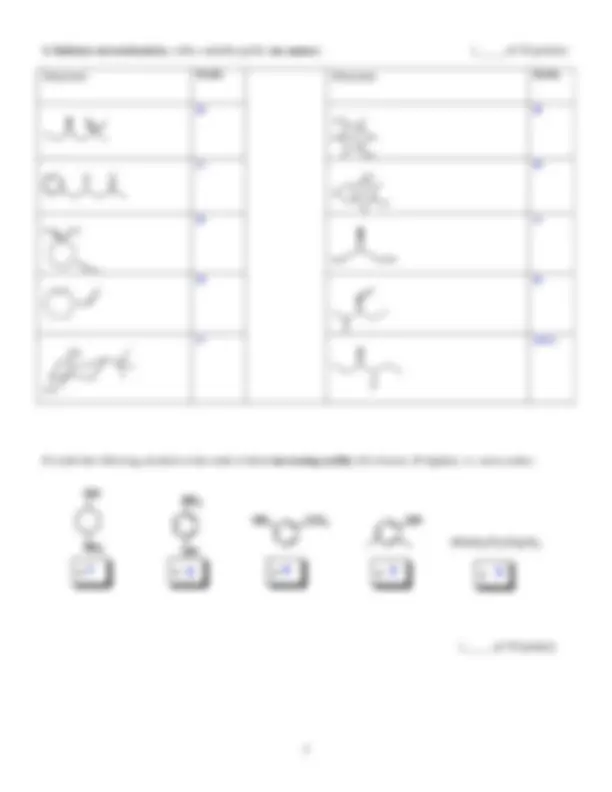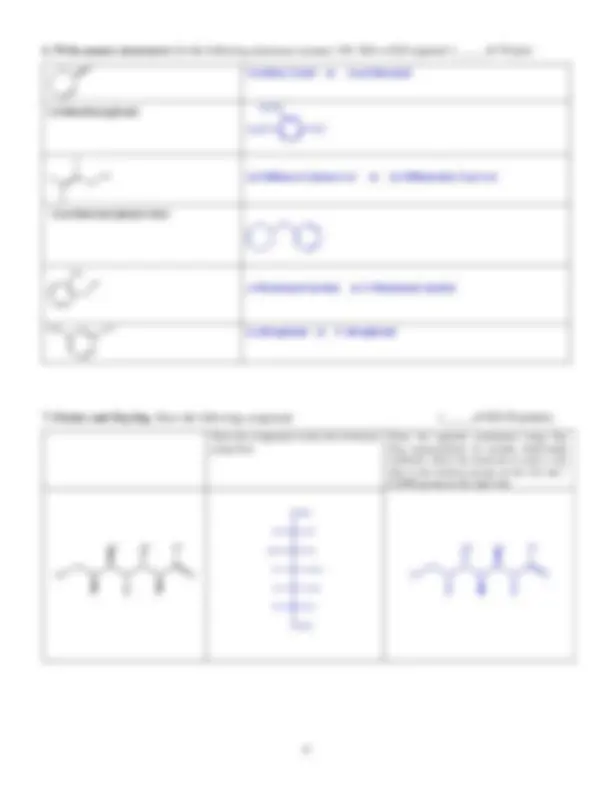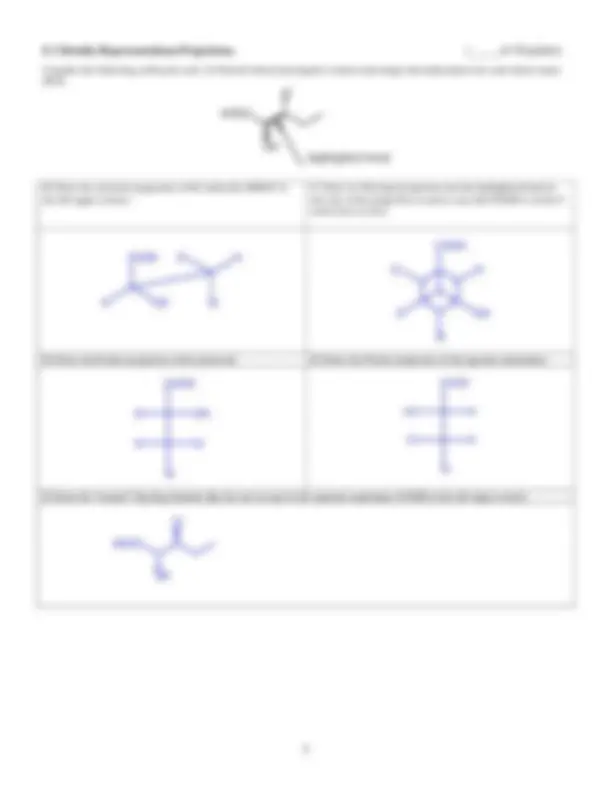





Study with the several resources on Docsity

Earn points by helping other students or get them with a premium plan


Prepare for your exams
Study with the several resources on Docsity

Earn points to download
Earn points by helping other students or get them with a premium plan
Community
Ask the community for help and clear up your study doubts
Discover the best universities in your country according to Docsity users
Free resources
Download our free guides on studying techniques, anxiety management strategies, and thesis advice from Docsity tutors
The answers and questions for test #2b of chemistry 306. It includes questions on the nature of interaction between ether and organometallic reagents, comparison of nucleophiles, resonance drawing, stereochemistry, and more. Students are required to write and draw answers in legible manner.
Typology: Exams
1 / 7

This page cannot be seen from the preview
Don't miss anything!




Please, write and draw in legible manner, use short and clear sentences. Note: the answer we cannot read/understand will be considered wrong!
Ether: unshared electron pair on oxygen acts as Lewis base capable of stabilizing the lectrodeficient magnesium dication. The dication acts as Lewis acid.
Et (^) Et
Et Et
The phenoxide anion is more effectively delocalized in 4-nitrophenoxide anion, which makes this anion more stable and the corresponding conjugated acid (4-nitrophenol) more acidic.
O
NO 2
H
H +
O
NO 2
O
NO 2
O
N O O
O
N O O
O
N O O
O
NO (^2)
O
NO 2
O
H
H +
O O^ O O (^) O
O 2 N O^2 N^ O^2 N^ O^2 N^ O^2 N^ O^2 N
OH Cyclohex-2-enol or 2-cyclohexenol
3,4-dimethoxyphenol OH
H 3 CO
H 3 CO
OH
F
F 2,3-Difluoro-2-buten-1-ol or 2,3-Difluorobut-2-en-1-ol
3-cyclohexenyl phenyl ether O
NO (^2) OH (^) o -Nitrobenzyl alcohol or 2-Nitrobenzyl alcohol
O 2 N OH m -nitrophenol or 3- nitrophenol
Draw the compound on the left in Fischer projection:
Draw the opposite enantiomer using Zig- Zag representation (to include dash/wedge symbols). Draw the molecule in such a way that it has hydroxy-group on the left and – COOH group on the right side
HO O
F
OH
F
OH OH
COOH
F H
HO H
H CH (^3)
H OH F H
CH 2 OH
HO O
F
OH
F
OH OH
Consider the following carboxylic acid. A) Find all chiral (stereogenic) centers and assign stereodescriptors for each chiral center (R/S).
Cl
B) Draw the sawhorse projection of this molecule (HOOC in the left upper corner):
C) Draw its Newman projection (use the highlighted bond as the axis of the projection; in such a way that COOH is on the C- atom close to you):
Cl
Et
Et
Cl H
D) Draw the Fischer projection of this molecule: D) Draw the Fischer projection of the opposite enantiomer:
COOH
H Cl
Et
COOH
HO H
Cl H
Et
E) Draw the “normal” Zig-Zag formula (like the one on top) of the opposite enantiomer (COOH in the left upper corner):
Cl